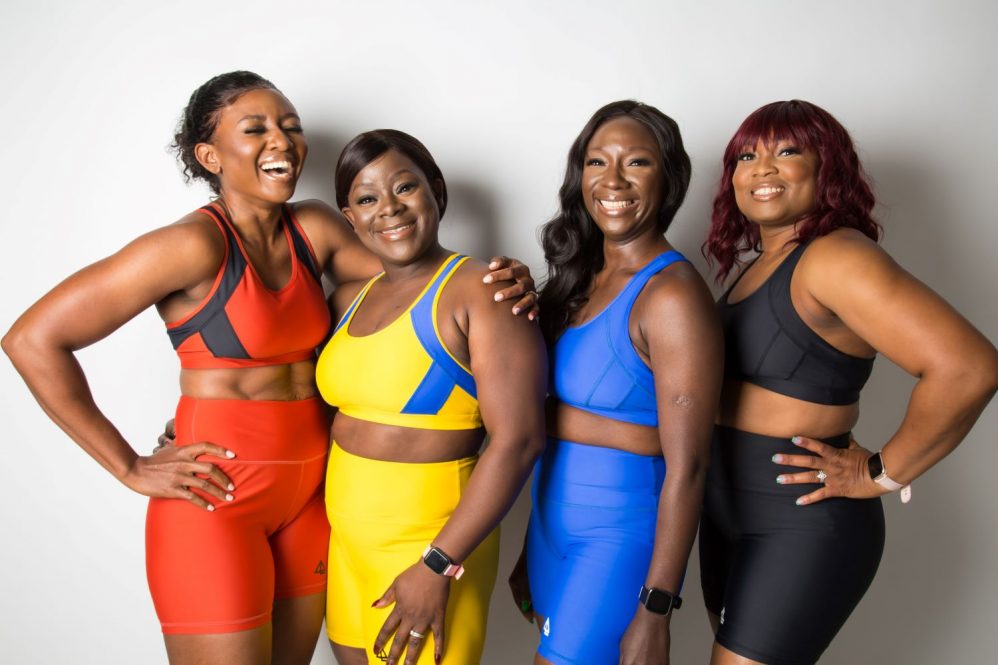A recent study highlights how a community organization called Black Girls Run! is supporting Black women around the country in getting and staying physically active.
Black women suffer some of the worst health disparities in the U.S. Four out of five Black women in the U.S. are overweight or obese, putting them at higher risk for diseases like diabetes and heart disease. Approximately 59% to 73% of Black women do not meet the recommended targets for physical activity.
Loneke Blackman Carr, assistant professor of nutritional sciences in the College of Agriculture, Health and Natural Resources, and Jolaade Kalinowski, assistant professor in the UConn Department of Human Development and Family Sciences studied how a national organization called Black Girls Run! supports Black women’s physical health through their Facebook page. These findings were published in JMIR Formative Research.
Black Girls Run! is an organization with chapters across the U.S. that aims to support Black women in engaging in physical activity by creating an inclusive community. Black Girls Run! shows how an organization can successfully create a space for Black women to find and participate in an active community.
“This is really novel,” Blackman Carr says. “Because we do find across a lot of the literature that Black women who want to engage in physical activity don’t see a lot of openness and welcoming in those spaces.”
Blackman Carr says many conventional spaces for physical activity are not welcoming to Black women whose bodies may not resemble normative notions of a “fit” body type.
“We are moving and motivating women to change the narrative of what running and health looks like for Black women,” says Jay Ell Alexander, CEO and owner of Black Girls Run! “Black Girls Run! is honored to be a part of this crucial research for our community. It highlights the need for our organization in our community and how our movement really can move the needle for Black women becoming healthier.”
The researchers wanted this study to shine a light on the positive activities the community is already engaging in.
“There’s a lot of research from a deficit perspective – what’s going wrong and what we aren’t doing right,” Kalinowski says. “And we wanted to highlight something that is amazing and a strengths-based way to talk about what’s already going on.”
The researchers focused on the organization’s Facebook page for this study, though the organization does also have an in-person component where women meet and exercise together.
“The digital realm has a lot of application for potential solutions as we look ahead to crafting research that hopefully will have a meaningful impact for Black women,” Blackman Carr says. “[In] reimaging what ideal health might look like, we really felt it was necessary to understand that [phenomena] through the digital space where there’s a lot of connection and other potential benefits.”
The researchers analyzed the kinds of posts on the Black Girls Run! Facebook page and how members engaged with those posts. They found that most posts celebrated member achievements, motivated members to get active, and promoted events like organized walks, runs, or hikes. These kinds of posts garnered 75% of all engagement.
These findings emphasize that rather than assuming they need to develop interventions to “fix” issues within communities, researchers can learn from what communities are already doing and create partnerships with existing organizations.
“I think that’s one big implication from this,” Kalinowski says. “Rather than going around and trying to create things from scratch, why don’t we look to the people who we’re thinking about, seeing what they’re already doing and how we can support that.”
This work highlights the need for further research and conversations about Black people engaging in physical activity within a social context built on centuries of systemic racism. Blackman Carr points to the example of Ahmaud Arbery, a Black man who was murdered by a group of white men while he was jogging.
“We have to continue to make space to address and to talk about systemic issues,” Blackman Carr says. “One of the findings that was really important in this paper was thinking about the impact of doing physical activity in a society where there’re still some racialized contexts, and there are modern historical stories and challenges that are really emblazoned in our collective memory.”
By combining physical health interventions with social justice, researchers can create more effective interventions for communities by attending to their needs and building on the practices organizations like Black Girls Run! have developed.
“This manuscript really highlights that this work is already happening, it’s happening from the ground up,” Blackman Carr. “So how can we as researchers be a part of making that real and disseminating that kind of work and effort.”
Following this study, the researchers are interested in continuing a community-partnership-based program to help reach more Black women looking to lose weight and improve other health outcomes.
“I think listening in, tuning in, leaning into what the community members want and taking this as a model for building organic community will inform how we move forward,” Kalinowski says.
This work relates to CAHNR’s Strategic Vision area focused on Enhancing Health and Promoting Diversity, Equity, Inclusion and Justice.
Follow UConn CAHNR on social media



